Inside the House of Lords
Lord Cormack offers his own perspective on the spectacular House of Lords chamber, a working piece of history
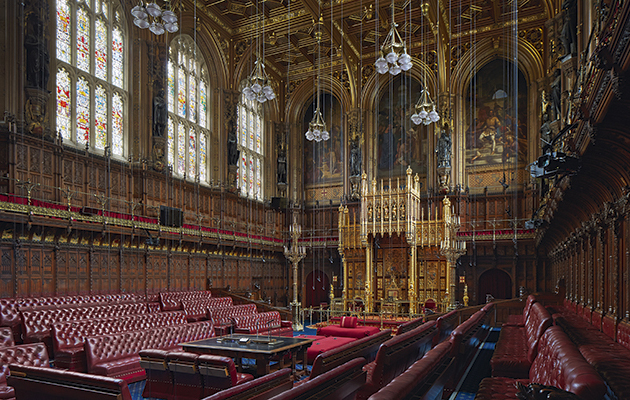

Alfred Barry, the second son and biographer of Charles Barry, the architect of the New Palace of Westminster, tells us that his father considered the House of Lords as ‘not a mere place of business nor even a mere House of Lords but as a chamber in which a sovereign, surrounded by the court, summoned the three estates of the realm’. Sitting on the red benches and recalling those words, I realise how completely and triumphantly Barry translated that vision into reality. For, in this interior, he and Pugin, who was responsible for its adornment, created their masterpiece.
The whole interior and all its decorative details trumpet Britain’s history and the fundamental values of its constitutional monarchy. The ceiling is divided into 18 compartments, adorned with the ancient royal badges the White Hart, the Sun of York, the Crown in the Bush (Henry VII), the Lion Passant of England, the Lion Rampant of Scotland, the Harp of Ireland, the Tudor Rose, the Pomegranate of Castile, the Lily of France and the Portcullis of Beaufort.
Sadly, the original stained glass was shattered in the Second World War. Nevertheless, the replacement armorial glass, bearing the coats of arms of peers and prelates from 1360 to 1900, is spectacular. From where I sit, I can see the heraldic achievements of one of the peers who fought at Agincourt, 600 years ago this month. I also have an excellent view of some of the 16 barons and two bishops of Runnymede, who, in a wonderful piece of architectural symbolism, hold up the roof.
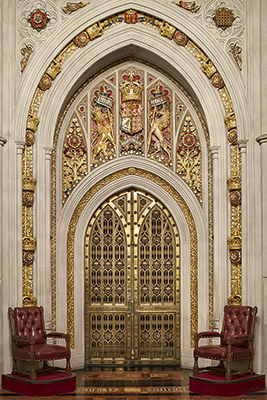
Throughout, there is a profusion of magnificent carving and five large-scale historical narrative paintings, part of a decorative cycle that extends throughout the palace. Again, these are deliberately chosen. Behind the throne are C. W. Cope’s frescoes of Prince Henry acknowledging the Authority of Chief Justice Gascoigne and of Edward III conferring the Order of the Garter on the Black Prince, together with William Dyce’s Baptism of King Ethelbert. At the other end of the Chamber, behind the Gallery where visitors sit, are three more. Two depict the spirits of Justice and Chivalry, by Daniel Maclise, and a third the spirit of Religion by J. C. Horsley.
The idea of gathering the whole of Parliament together in one chamber was directly informed by medieval precedent. At the inauguration of each new parliament, with the lords spiritual and temporal gathered around him, the king would summon the Commons the knights of the shire and the burgesses from the boroughs—from Westminster Hall to register their presence. The ceremony is documented from the reign of Richard II (d.1399), but the earliest description of it, written by the two MPs for Colchester, dates from the early years of the reign of Henry VII.
In all essential details, the State Opening of Parliament today is the same ceremony that has been enacted in this chamber almost every year since Queen Victoria first opened Parliament here in 1852, although the widowed Queen did not come here for some years after Prince Albert’s death and not at all after 1886. In the Sovereign’s absence, a commission of senior peers acted for her, as it still does when-ever Parliament is pro-rogued or dissolved.
So it was on May 27 this year, as another new Parliament assembled for the first time. The Queen took her place on the throne, beneath Pugin’s wonderfully gilded canopy and in front of the intricately carved and magnificently adorned cloth of estate.
Sign up for the Country Life Newsletter
Exquisite houses, the beauty of Nature, and how to get the most from your life, straight to your inbox.
The throne, flanked by great standing candelabra and, on every other day of the year, surrounded by a brass rail, may be the focal point of the most richly appointed legislative chamber in the world, but this is very much a p
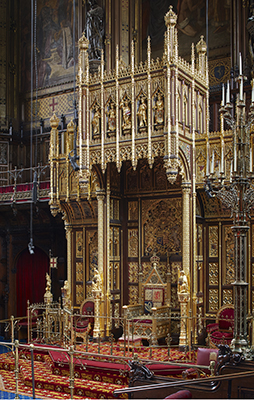
lace of business, where proposed legis-lation is subject to detailed scrutiny and the great issues of the day are debated.
When the Lords is in session, privy councillors who are not peers, and the first-born children of peers, are allowed to sit on the steps of the throne. Just in front of them is the other symbolic seat, the Woolsack. This large, squat, red-covered seat serves as a reminder that, in medieval times, England’s prosperity depended upon the wool trade. From the reign of Edward III, until the creation of the Supreme Court in 2006, it was the Lord Chancellor who presided over the Lords from here.
In front are two other long, wool-stuffed benches, but now that the judicial functions of the Lords have been transferred, it is only at the State Opening that our senior judges sit there. Now, the Woolsack itself is the seat of the Lord Speaker, an office created only a decade ago.
Immediately to the Lord Speaker’s right are the bishops the lords spiritual. Twenty-six have been entitled to sit in the Lords since the Reformation. To earlier parliaments, bishops and the mitred abbots of the most important monastic establishments were summoned. Today, the Church of England is represented by the two archbishops and the bishops of London, Winchester and Durham, all of whom take their seats as of right. The other 21 bishops sit by virtue of their seniority of appointment, although that rule has recently been suspended to allow newly appointed women bishops to join us.
Behind and beyond the bishops sit the peers who support the Government and on the Lord Speaker’s left are the Opposition parties. Below the Table of the House, at which the clerks sit to advise on procedure (and among other things, they are also responsible for the official Journal, not to be confused with Hansard), are the Cross Benches, a feature unique to the House of Lords. Cross benchers are peers who do not have any party allegiance and there are almost 200 of them in the present Parliament, so they spill over onto the Government side of the House.
In the last Parliament, during the Coalition, they sat on the same side as the Labour Opposition, but they have now changed places with the Liberal Democrats.
Beyond the Cross Benches is the Bar of the House, to which the Commons are summoned during the opening and pro-roguing of Parliament. At the opposite end of the chamber from the throne is the Press Gallery. Tucked away discreetly in the same place is the commentary box from which sound broadcasts are transmitted. On either side of the chamber are voting lobbies. In the Commons, where voting follows the fairly raucous ritual of shouting ‘aye’ and ‘no’, the voting lobbies are so named and MPs are counted when they come out. But in the Lords, we vote ‘content’ or ‘not content’ not by trooping out of the lobby, but by going into the one of our choice.
By an accident of war, it was this chamber that witnessed some of the most dramatic debates and memorable oratory in modern parliamentary history. After the Chamber of the Commons was destroyed by bombing in 1941, the Lower House moved into the Lord’s chamber. The Lords, meanwhile, adjourned to the infinitely smaller, if almost equally grand, Robing Room. So it was from the Despatch Box here that Churchill’s greatest wartime speeches were delivered.
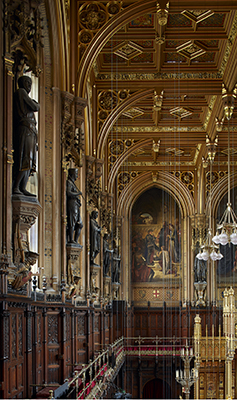
The Commons continued to use the chamber until their own was restored and ready for use once more after the war. There is something symbolic about the displacement of the Lords during the war that is relevant to today’s debate about its role, as the move underlined the political supremacy of the Lower House in terms of power and importance. In spite of this, the Lords is always referred to as the Upper House and the Clerk of the House of Lords is the Clerk of the Parliaments.
The chamber is, more properly, although rarely, described as the Parliament Chamber, for it is the only place where the constituent elements of Parliament Monarch, Lords and Commons meet together. On these occasions, we are the ones who sit while the members of the Commons stand at the Bar. But for how much longer will this symbolic pageantry survive? There are, of course, those who would have us dispense with all the paraphernalia of ceremony, but very few of them would object to the colourful array of academic robes assembled on a degree day in even the most modern university. Robes in my opinion have their place.
More profoundly still, does the Lords have a role in modern politics? As chairman of the Campaign for an Effective Second Chamber, I am one of a large group from both Houses of Parliament who strongly believe that there is a continuing need for an appointed chamber of experience and expertise and with a large independent membership, which can scrutinise and improve legislation and debate great issues without challenging the unambiguous democratic mandate of the Commons.
No institution is ever perfect. There are too many of us and sensible reform would make us more effective however, reform and abolition are very different things.
Country Life is unlike any other magazine: the only glossy weekly on the newsstand and the only magazine that has been guest-edited by HRH The King not once, but twice. It is a celebration of modern rural life and all its diverse joys and pleasures — that was first published in Queen Victoria's Diamond Jubilee year. Our eclectic mixture of witty and informative content — from the most up-to-date property news and commentary and a coveted glimpse inside some of the UK's best houses and gardens, to gardening, the arts and interior design, written by experts in their field — still cannot be found in print or online, anywhere else.
-
 Some of the finest landscapes in the North of England with a 12-bedroom home attached
Some of the finest landscapes in the North of England with a 12-bedroom home attachedUpper House in Derbyshire shows why the Kinder landscape was worth fighting for.
By James Fisher
-
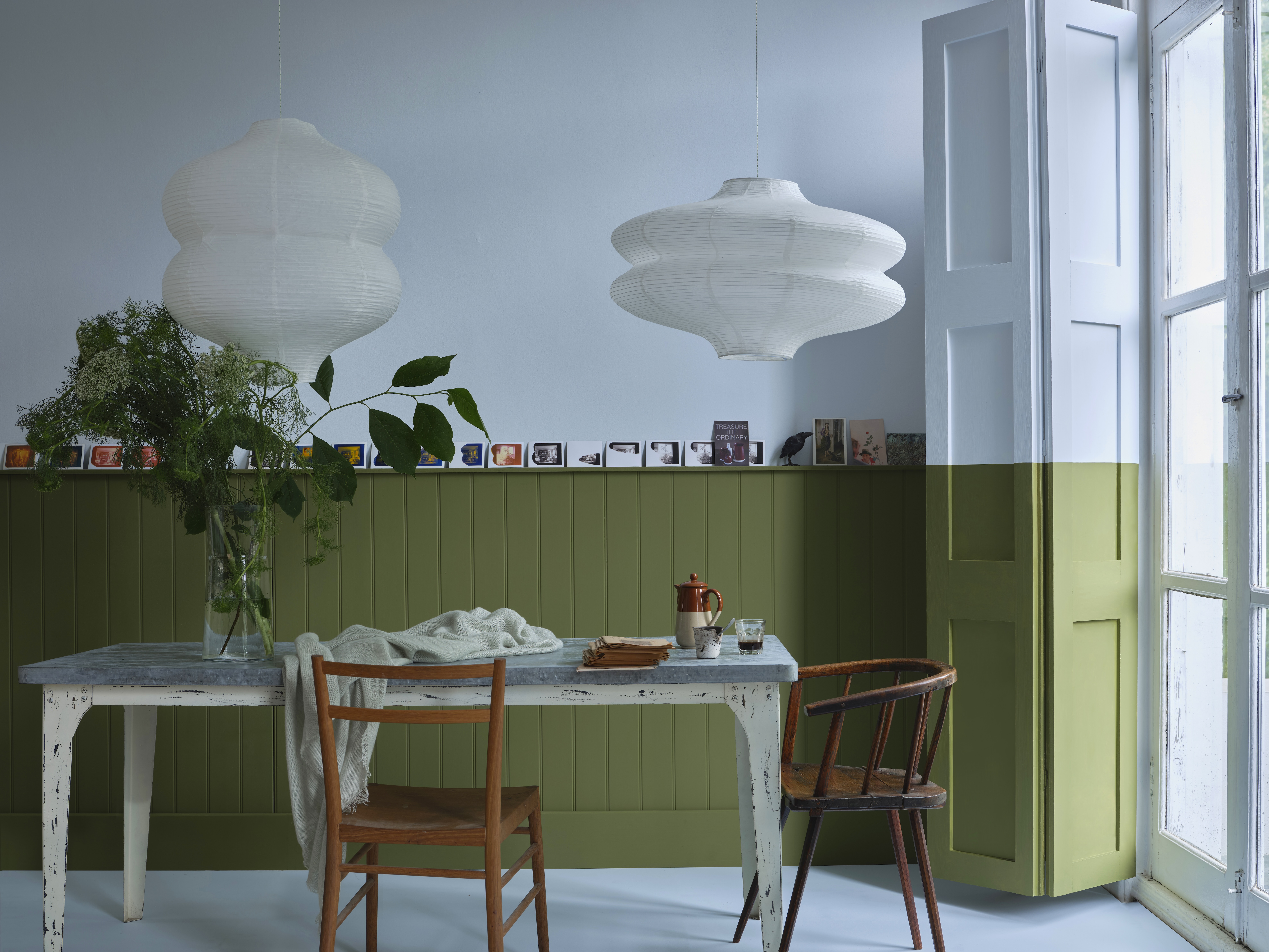 John Sutcliffe — The man, the myth and the paint-naming legend behind Dead Salmon and Elephant's Breath
John Sutcliffe — The man, the myth and the paint-naming legend behind Dead Salmon and Elephant's BreathBy Carla Passino